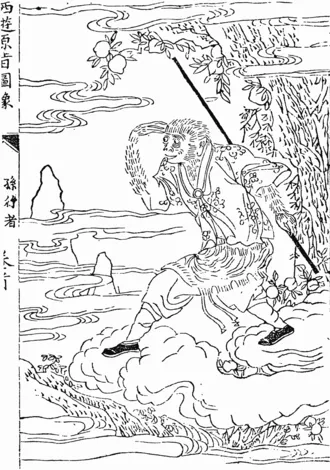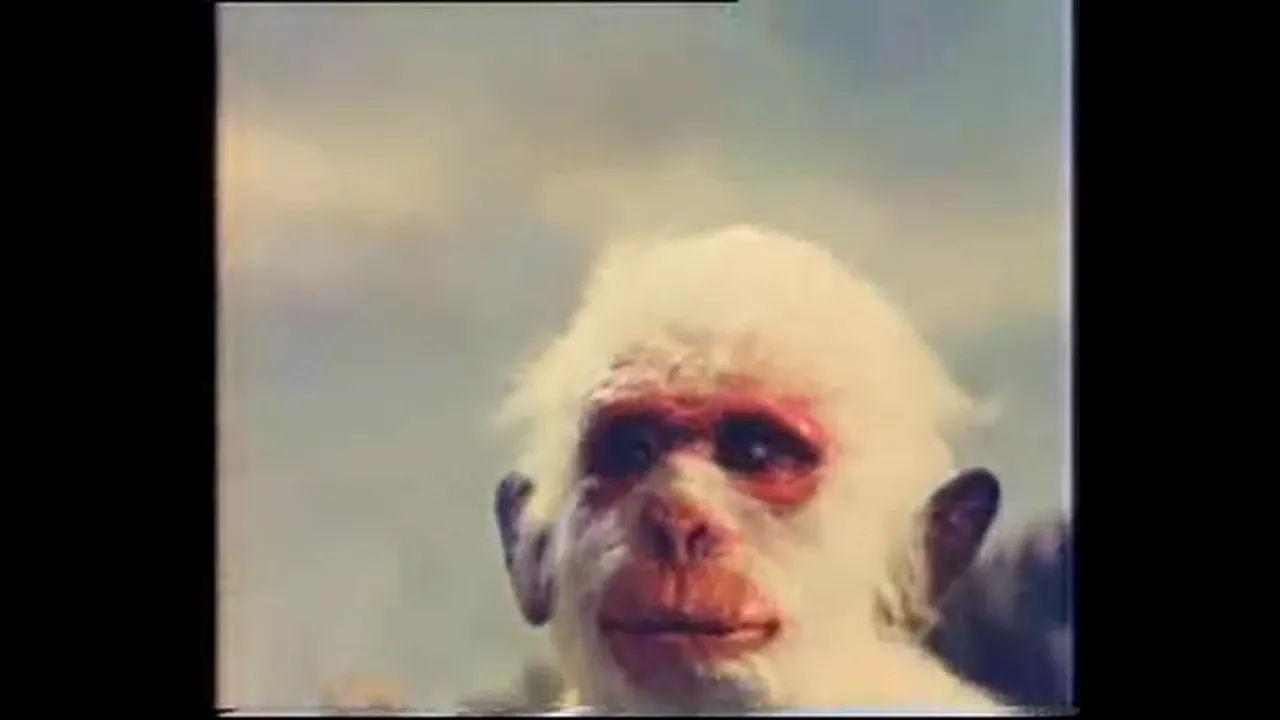 Beijing Zoo part 2: Exploring Chimpanzees!
Beijing Zoo part 2: Exploring Chimpanzees!
The next animal which I saw for the first time is the Chimpanzees which is closely related to humans according to the Human Evolution theories though I don't have the proper knowledge to explain the proper claim and the exact information on that. But I can say that their outlook really has some tiny resembling to human shape. Furthermore, I have explored its nature which I feel is a pity for its cage life and it was staring at the visitors' inn with such a look that will really touch any human being! There were so many people around its cage and I was thinking the appearance close to a Human being locked and prison and people are too entertained by that which is the same feeling as when a person falls in a danger and most modern people will ignore and only a few good-hearted people will come to help!
Reading articles from my wonderful friend Hassan, I always enjoy exciting new ideas!
Although he does not speak Chinese, he has been living in China for 3 years now, and is an amazing person!😀
I can say some greetings in Chinese and read Chinese characters.
你好 Hassan?
Looking at pictures of chimpanzees, I wanted to tell Hassan my favorite Indian legend.
 The Monkey and The Crocodile
The Monkey and The Crocodile
My favorite Indian legend is Panchatantra Story: The Monkey and The Crocodile!😃
Perhaps Hassan remembers the Panchatantra Story: The Monkey and The Crocodile!
The most famous Indian mythology among East Asians?
1. Chinese who went to ancient India!
Since 2000 years ago, Indian civilization has brought great attraction and interest to East Asians, including China!
So, the legends of Hinduism and Buddhism in India were spread across East Asia.
East Asians especially liked fables with animals, so The Panchatantra (IAST: Pañcatantra, ISO: Pañcatantra, Sanskrit: पञ्चतन्त्र, "Five Treatises") became very popular.
I guess my friend Hassan also knows The Panchatantra well!😉
 Japanese illustration depicting white lotuses in Chapter 25: "Universal Gateway" of the Lotus Sutra. Text inscribed by Sugawara Mitsushige, Kamakura period, c. 1257, Metropolitan Museum of Art, New York.
Japanese illustration depicting white lotuses in Chapter 25: "Universal Gateway" of the Lotus Sutra. Text inscribed by Sugawara Mitsushige, Kamakura period, c. 1257, Metropolitan Museum of Art, New York.
The Lotus Sūtra (Sanskrit: सद्धर्मपुण्डरीकसूत्रम्, romanized: Saddharma Puṇḍarīka Sūtra, lit. 'Sūtra on the White Lotus of the True Dharma')[1] is one of the most influential and venerated Buddhist Mahāyāna sūtras. It is the main scripture on which the Tiantai, Tendai, Cheontae, and Nichiren schools of Buddhism were established. It is also influential for other East Asian Buddhist schools, such as Zen. According to the British Buddhologist Paul Williams, "For many Buddhists in East Asia since early times, the Lotus Sūtra contains the final teaching of Shakyamuni Buddha—complete and sufficient for salvation."[2] The American Buddhologist Donald S. Lopez Jr. writes that the Lotus Sūtra "is arguably the most famous of all Buddhist texts," presenting "a radical re-vision of both the Buddhist path and of the person of the Buddha."[3]
Two central teachings of the Lotus Sūtra have been very influential for Mahāyāna Buddhism. The first is the doctrine of the One Vehicle, which says that all Buddhist paths and practices lead to Buddhahood and so they are all merely "skillful means" of reaching Buddhahood. The second is the idea that the lifespan of the Buddha is immeasurable and that therefore, he did not really pass on into final Nirvana (he only appeared to do so as upāya), but is still active teaching the Dharma.[note 1]
Some fables from The Panchatantra were introduced to Buddhists in China through The Lotus Sūtra [Chinese: 妙法蓮華經; pinyin: Miàofǎ Liánhuá jīng (shortened to 法華經; Fǎhuá jīng)].
The crocodile has a concept similar to the evil and liar king in East Asia.
So, I was thrilled to see the clever monkey brilliantly defeat the evil king crocodile that rules the river.
East Asians, who must always be subjected to the cruel and evil rule of kings, felt vicarious satisfaction when they saw the clever monkey.
 An illustrated edition of the story
An illustrated edition of the story
Journey to the West (Chinese: 西遊記; pinyin: Xī Yóu Jì) is a Chinese fantasy novel published in the 16th century during the Ming dynasty and attributed to Wu Cheng'en. It is regarded as one of the greatest Classic Chinese Novels, and has been described as arguably the most popular literary work in East Asia.[2] Arthur Waley's abridged translation, Monkey, is known in English-speaking countries.
The novel is an extended account of the legendary pilgrimage of the Tang dynasty Buddhist monk Xuanzang, who traveled to the "Western Regions" (Central Asia and India) to obtain Buddhist sacred texts (sūtras) and returned after many trials and much suffering. The monk is referred to as Tang Sanzang in the novel. The novel retains the broad outline of Xuanzang's own account, Great Tang Records on the Western Regions, but adds elements from folk tales and the author's invention: Gautama Buddha gives this task to the monk and provides him with three protectors who agree to help him as an atonement for their sins. These disciples are Sun Wukong, Zhu Bajie, and Sha Wujing, together with a dragon prince who acts as Tang Sanzang's steed, a white horse. The group of pilgrims journeys towards enlightenment by the power and virtue of cooperation.
Journey to the West has strong roots in Chinese folk religion, Chinese mythology, Confucianism, Taoist, and Buddhist theology, and the pantheon of Taoist immortals and Buddhist bodhisattvas are still reflective of some Chinese religious attitudes today. Enduringly popular,[3] the novel is at once a comic adventure story, a humorous satire of Chinese bureaucracy, a source of spiritual insight, and an extended allegory.
The Monkey And The Crocodile became very popular with East Asians and eventually gave birth to Journey to the West (Chinese: 西遊記; pinyin: Xī Yóu Jì), the greatest masterpiece of classical Chinese literature!
 Monkey King
Sun Wukong
Monkey King
Sun Wukong
The Monkey King, also known as Sun Wukong (traditional Chinese: 孫悟空; simplified Chinese: 孙悟空) in Mandarin Chinese, is a legendary mythical figure best known as one of the main characters in the 16th-century Chinese novel Journey to the West (traditional Chinese: 西遊記; simplified Chinese: 西游记) and many later stories and adaptations.[2] In Journey to the West, Sun Wukong is a monkey born from a stone who acquires supernatural powers through Taoist practices. After rebelling against heaven, he is imprisoned under a mountain by the Buddha. After five hundred years, he accompanies the monk Tang Sanzang (唐三藏) and two other disciples on a journey to get back Buddhist sutras from the West (India), where Buddha and his followers dwell.
Sun Wukong possesses many abilities. He has amazing strength and is able to support the weight of two heaven mountains on his shoulders while running "with the speed of a meteor".[3] He is extremely fast, able to travel 108,000 li (54,000 km, 34,000 mi) in one somersault. Sun Wukong also acquires the 72 Earthly Transformations, which allow him to access 72 unique powers, including the ability to transform into sundry animals and objects. He is a skilled fighter, capable of defeating the best warriors of heaven. His hair has magical properties, capable of making copies of himself or transforming into various weapons, animals and other things. He also shows partial weather manipulation skills and can stop people in place with fixing magic.[4]
A Chinese created Chinese fantasy literature around the 16th century with The Monkey King, also known as Sun Wukong (traditional Chinese: 孫悟空; simplified Chinese: 孙悟空) as the main character. The Monkey King became a hero who gained sensational popularity among East Asians.
Fighting evil demons and kings for humans, The Monkey King has become the most beloved fantasy hero in East Asia!
 Dragon Ball debuted in Weekly Shōnen Jump No. 51, on December 3, 1984 which is also considered to be highly sought after among fans and collectors.
Dragon Ball debuted in Weekly Shōnen Jump No. 51, on December 3, 1984 which is also considered to be highly sought after among fans and collectors.
Dragon Ball (Japanese: ドラゴンボール, Hepburn: Doragon Bōru) is a Japanese media franchise created by Akira Toriyama in 1984. The initial manga, written and illustrated by Toriyama, was serialized in Weekly Shōnen Jump from 1984 to 1995, with the 519 individual chapters collected into 42 tankōbon volumes by its publisher Shueisha. Dragon Ball was originally inspired by the classical 16th-century Chinese novel Journey to the West, combined with elements of Hong Kong martial arts films. The series follows the adventures of protagonist Son Goku from his childhood through adulthood as he trains in martial arts. He spends his childhood far from civilization until he meets a teen girl named Bulma, who encourages him to join her quest in exploring the world in search of the seven orbs known as the Dragon Balls, which summon a wish-granting dragon when gathered. Along his journey, Goku makes several other friends, becomes a family man, discovers his alien heritage, and battles a wide variety of villains, many of whom also seek the Dragon Balls.
Toriyama's manga was adapted and divided into two anime series produced by Toei Animation: Dragon Ball and Dragon Ball Z, which together were broadcast in Japan from 1986 to 1996. Additionally, the studio has developed 21 animated feature films and three television specials, as well as two anime sequel series titled Dragon Ball GT (1996–1997) and Dragon Ball Super (2015–2018). From 2009 to 2015, a revised version of Dragon Ball Z aired in Japan under the title Dragon Ball Kai, as a recut that follows the manga's story more faithfully by removing most of the material featured exclusively in the anime. Several companies have developed various types of merchandising based on the series leading to a large media franchise that includes films, both animated and live-action, collectible trading card games, numerous action figures, along with several collections of soundtracks and numerous video games. Dragon Ball has become one of the highest-grossing media franchises of all time.
Since its release, Dragon Ball has become one of the most successful manga and anime series of all time, with the manga sold in over 40 countries and the anime broadcast in more than 80 countries. The manga's 42 collected tankōbon volumes have over 160 million copies sold in Japan and 300 million copies sold worldwide, making it one of the best-selling manga series. Reviewers have praised the art, characterization, and humour of the story. It is widely regarded as one of the greatest and most influential manga series ever made, with many manga artists citing Dragon Ball as a source of inspiration for their own now-popular works. The anime, particularly Dragon Ball Z, is also highly popular around the world and is considered one of the most influential in boosting the popularity of Japanese animation in Western culture. It has had a considerable impact on global popular culture, referenced by and inspiring numerous artists, athletes, celebrities, filmmakers, musicians and writers around the world.
The Monkey King's popularity has been so great in East Asia even to this day, Akira Toriyama has created a new fantasy manga Dragon Ball (Japanese: dragonboru, Hepburn: Doragon Bōru) featuring The Monkey King as the main character.

I wonder if Hassan's Chinese friends have told him that!😄

@joeyarnoldvn is the monkey king or the caveman??😨
Is @joeyarnoldvn descendant of a white monkey?

Ps: I wonder if the handsome Monkey King living in Oregon will admit that he is descended from the legendary Asian royalty! 😝😁

